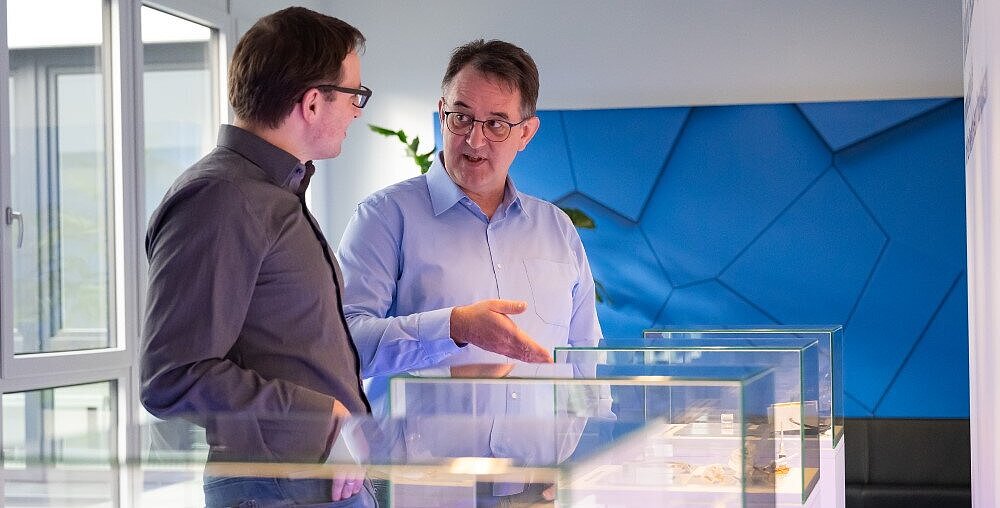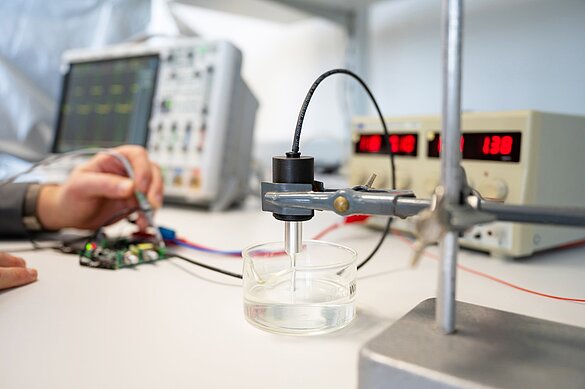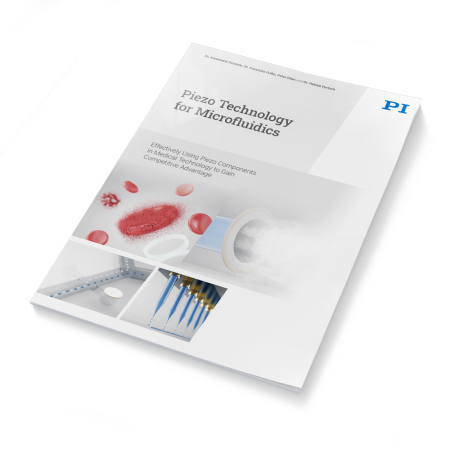The use of ultrasound is becoming increasingly important in the fields of medical technology, chemistry, and biotechnology. Ultrasonic transducers based on piezo technology, are, for example, important tools in active microfluidics for in vitro diagnostics (IVD). Ultrasonic waves are used to mix the fluids to be examined in a defined manner, to lyse blood cells, or to align, move, or sort individual cells and particles in a defined manner using so-called acoustic tweezers in cytometry. To support customers in these future-oriented applications, PI Ceramic has developed a >> Langevin transducer. The developers Frank Eder and Dr. Michael Oertel provide insights into the development work and highlight the opportunities and challenges of ultrasonic transducers.

High Level of Vertical Integration Based on Development
In the past, PI Ceramic has focused on customized solutions. Dr. Michael Oertel explains that PI Ceramic now also wants to develop its own concepts to inspire customers with new ideas and solutions. This requires not only a lot of development experience, but also a team that works hand in hand, even across locations. PI Ceramic still lacked such a product in this area, and, therefore, it was a logical step to add an ultrasonic transducer to the portfolio, adds Frank Eder. Dr. Oertel is certain that these solutions will enable PI Ceramic to offer even greater vertical integration and thus a complete product from one source, ready for immediate use. True to its core competencies, PI Ceramic continues to design and manufacture ultrasonic transducers tailored to the customer's specific application.

Good, trusting, and smooth cooperation between colleagues makes development much easier. In fact, it makes creative work fun.
Frank Eder, Senior Design Engineer
Compact Solutions for Individual Applications
The benefits of ultrasonic transducers are manifold and depend on the respective application field. “They are popular for cell lysis because they use ultrasound rather than chemical additives,” explains Frank Eder. He adds that this application does not require the application of heat, which could cause unwanted reactions. Mechanical procedures are time-consuming and usually require additives such as steel balls in the reagent, which must be removed later. Ultrasonic techniques, on the other hand, are generally free of unwanted additives and reduce the amount of work involved significantly. Dr. Michael Oertel emphasizes that PI Ceramic's solutions can be used in compact mobile devices because the control electronics are hardly bigger than a hand and are run on 12 V.

Developing something new, acquiring knowledge for it and using it is exactly how I imagined working as a developer would be.
Dr. Michael Oertel, Senior Design Engineer
Hand in Hand Development of Design and Electronics

There were also challenges and difficulties to overcome during development. “Building and evaluating a meaningful simulation model was one of the main challenges during basic development. This procedure allowed us to determine the parameters for the electronics, the geometry of the system, and the appropriate choice of material, which would have been a long and difficult process without the model,” says Frank Eder, who is responsible for the transducer's design. Dr. Michael Oertel, who specializes in electronics, mentions another challenge that the team was able to solve quickly: “At the same time as we were developing the transducer, we also had to develop the electronics to control it. This proved to be difficult because, at that time, the transducer was not fully developed, and the requirements were not fully known.” Dr. Oertel is pleased that the problem was solved quickly by procuring a laboratory generator.
From Complete Solutions to Customized One-Offs to Series Production
PI Ceramic develops and manufactures both complete solutions with appropriate electronics, as well as individual solutions according to customer's requirements without electronics. The possibilities for quantities are varied: from single pieces to large series. Ultrasonic transducers can be used in a wide variety of fields and markets, including industrial applications such as metrology or materials processing.

